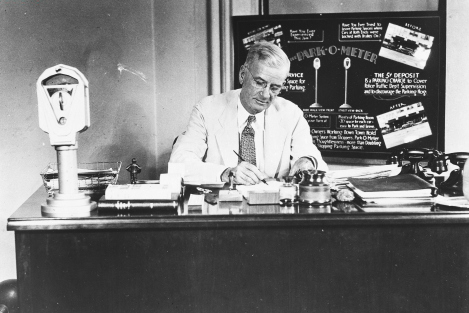
The Big Idea
Inspiration can strike any place — or at any age. Of the 81 inventions that rocked the 20th century (based on Encyclopaedia Brittanica‘s list of 325 inventions that had profound effects on human life), seven were the brainchildren of Americans age 50 or older working solo. Here’s why it pays to keep plugging away.
MUZAK, 1922
George Owen Squier (1863-1934)
In 1910, as the U.S. Army’s chief signal officer, Squier invented “multiplexing,” the simultaneous transmission of multiple signals over one line. The technology laid the groundwork for his invention of “wired radio,” which he later renamed Muzak, shortly before his retirement.
Trivia: In 1908, working with the Wright brothers, became one of world’s first airline passengers.
ASSEMBLY LINE, 1913
Henry Ford (1863-1947)
Adapting the meatpacking industry’s model, Ford perfected the concept for mass production, or, as he put it, for producing “a motor car for the great multitude.” By 1914 his company had a 48 percent share of the market.
Trivia: Didn’t believe in accountants.
ELECTRIC RAZOR, 1929
Jacob Schick (1877-1937)
Schick invented the forerunner of “injector” razors but sold the rights so he could focus on his electric concept. Schick Dry Shaver Inc. began operating in 1930.
Trivia: Accused by President Franklin D. Roosevelt of taking up Canadian citizenship in 1935 “to escape our income [tax] and inheritance laws.”
HELICOPTER, 1939
Igor Sikorsky (1889-1972)
In 1919, six years after designing and flying the world’s first multi-engine airplane in his native Russia, Sikorsky immigrated to the United States. Turning to the helicopter, he designed and flew what would become the standard for all others.
Trivia: Designed his first helicopter, powered by rubber bands, at 12.
PARKING METER, 1932
Carl Magee (1872-1946)
The Oklahoma City Chamber of Commerce asked Magee to solve problems caused by all-day parkers in the downtown business district. Result: the coin gobbler.
Trivia: As a crusading newspaper editor, played a key role in exposing the Teapot Dome bribery scandal.
MICROWAVE OVEN, 1945
Percy L. Spencer (1894-1970)
The idea came to him when a chocolate bar melted in his shirt pocket as he stood in front of a magnetron, the microwave tube used to power radar.
Trivia: Received 150 patents but never finished elementary school.
COMMUNICATIONS SATELLITE, 1960
John Robinson Pierce (1910-2002)
Pierce designed the world’s first communications balloon satellite while working at Bell Telephone Laboratories (where he also coined the term “transistor”). It led to the development of Telstar 1, which, launched by NASA in 1962, relayed the first live television signals by satellite.
Trivia: Wrote science-fiction stories under the pseudonym J.J. Coupling.
This article originally appeared in the April 2010 issue of the AARP Bulletin.
